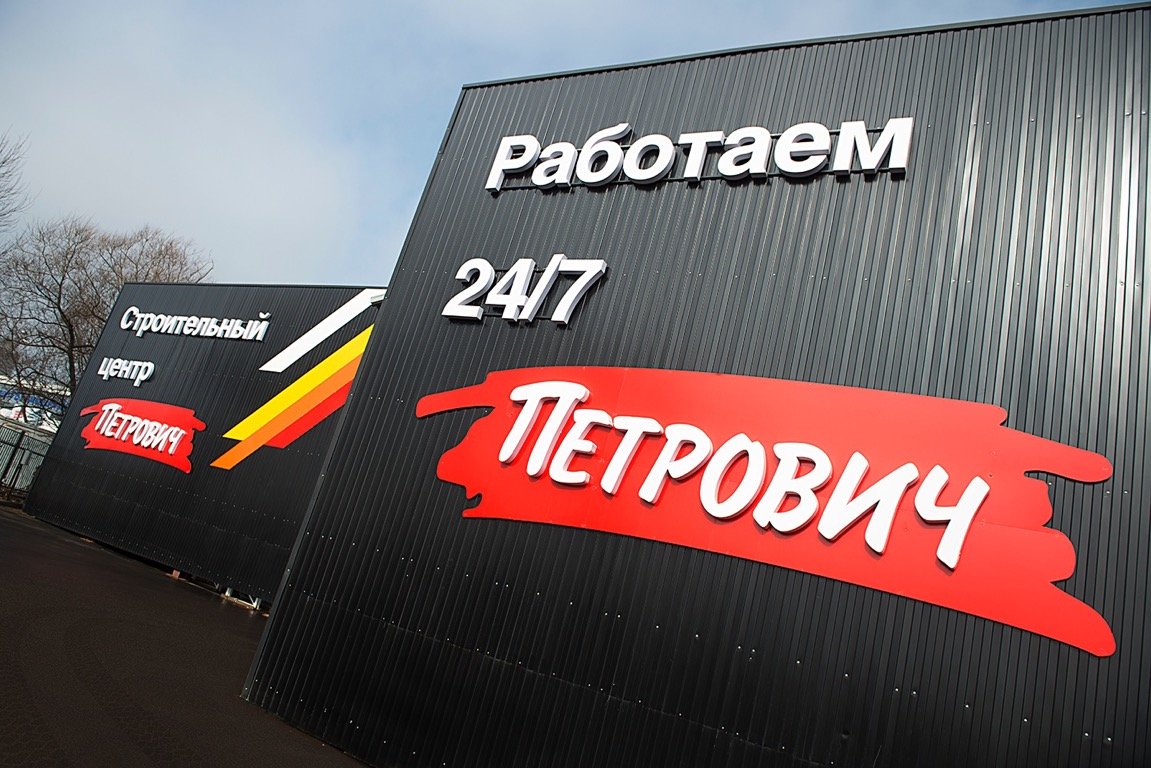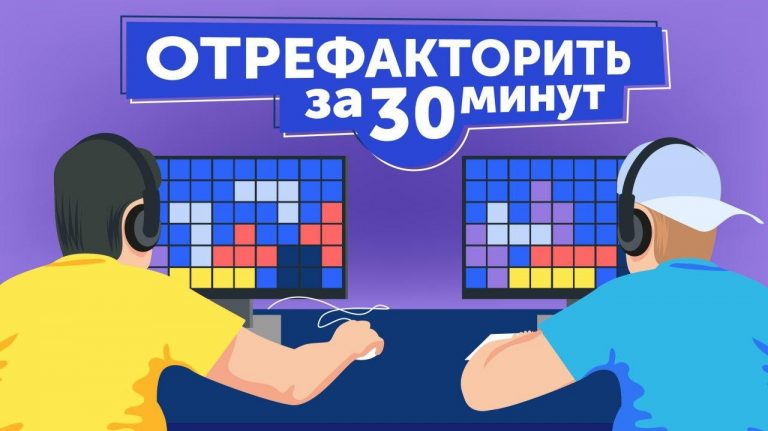How Petrovich integrates external developers into projects

Runet Rating asked for an interview with the Petrovich company on the topic of choosing development contractors – it turned out to be an interesting and calm conversation about how to properly “prepare” outstaff (from the point of view of a large client), and why development agencies need to do PR, but not you need to expect that after the publication of the article, leads will immediately pour in.
Answered questions Igor Zaichenkohead of the group of marketing projects “Petrovich”.
Igor, please tell us what you do and how you intersect with development.

Igor Zaichenko
Head of marketing projects group “Petrovich”
I lead an ecosystem of services for construction and renovation “Petrovich.Dom“. Basically, these are digital products (websites, mobile applications, internal information systems).
As a rule, we do the development ourselves, we have a structured technology stack. But for tasks that relate to the front-end, the user side of products (design, interface, etc.), we sometimes involve agencies, outsourcing companies and individual teams.
Before starting cooperation, we evaluate the portfolio, the professional competencies of the performers, ask for access to the repository, and make a review. If the quality suits our team, then we start working together.
In what cases do you give the development to the contractor?
I think we are not unique. Development is always a limited resource, and we have a large backlog.
When a task runs the risk of getting stuck in terms of implementation and we lose potential income on this, we involve third-party developers. In general, we have a flexible approach to resources, use outstaff, if necessary, increasing resources for a month or two.
What points should you pay attention to in order to use outstaff well?
Leaving aside some banal things like time zones, we have created a few rules:
1. All interaction takes place in our control, accounting and documentation systems. We decided that partners can work in their programs, but we record and keep records in our systems. Jira – tracking, Confluence – requirements, formalization, architecture description.
2. In visualization tasks, we use our design code. We have practically no tasks where designers and planners can do anything they want. We respect consistency, and even the position of elements on the page is put forward as a requirement. This allows you to get a predictable and understandable result.
3. Work on sprints. Repository access. There are rare exceptions when there is a primary technical task and a requirements model. As a rule, we use flexible methodologies and work in sprints. And we always insist on access to data.
4. Please introduce us to specific performers: testers, architects, etc. So that we can look not at a conditional company and team leader, but at specific people who will work with us. This is a fundamentally important point, because the result largely depends on the level of interaction. When we connect a new specialist to an existing team, as a rule, there is already a team leader and a team. The team leader is responsible for prioritization, if there are inconsistencies, the product is connected. This model has worked well.
What should an outstaff sale look like so that you feel comfortable buying it?
I can tell you how she Not should look like.
Now in 90% of cases it looks like this: “We have developers, here are their rates, tell me who you need, and we will recruit the required number of people.”
But this is a bad approach, because it is anonymized information. It is important to understand who these specialists are, what products they worked on, etc.
We do not have such an urgent need to start cooperation with any outstaff company. If necessary, I will look at the ratings myself, for example, your Runet Rating, find a team and chat with it.
We get a lot of offers, but all letters with the words “look how great we are”, as a rule, go to the trash.
If a company has experience, weight, it is enough for it to be competently present in the information field and ratings, “fill in” the product portfolio on the site, introduce the development team, indicate the staffing, describe the frameworks and methodologies that the team uses in their work.

Were there such stories when you were not familiar with the agency before, but saw an interesting case and took a step forward yourself?
Yes, we came across a product from one development team, and when we started creating our mobile application, we turned to them. Just the case when not the agency came to the customer, but vice versa.
But in general, the company goes to the market when there is a need for a resource.
No one specifically sits and monitors agency PR activities.
First, there is a need to receive a certain service, then the customer is interested in who can provide this service with high quality.
The information field is analyzed, the stability of the company is assessed, the portfolio of projects that have been implemented in recent years. That is, a PR story does not work all at once, PR is always an investment in the future, in a press portrait, in a reputation that after a while begins to work for you.
Agencies just often do PR in the hope that it will give a quick return, that ideally, leads will come to them right now. Do you mean that there should be a “press portrait” in any case, and you should not expect an immediate result from it?
Of course not. If a company appeared yesterday/today, then it is unlikely to be considered as a partner of a large project.
It is important for the customer to understand that the team is stable, has implemented many cases, is not afraid to talk about the background, mistakes, etc. It is important to invest in public history, but without counting on momentary benefits.
But there are agencies that are hardly visible in public, they just sit quietly and work. In theory, such a position also has the right to life?
If the guys have a cool order, they sit and quietly “sawing” some product, then, of course, they are not interested.
We are talking about the market, there should be no illusions here. If a contractor needs work, orders, a portfolio, then it will be impossible not to be a part of this history, community and work outside of it.
What do you think about agency ratings? You said above that if necessary, you can use the “Rating of the Runet” (we are pleased), but if you can – a little more.
I have a normal attitude towards them, but the position in the ranking is not the main criterion when making a decision.
On the other hand, if we supplement Katya’s words, then the people who are present in the ratings work on them, add their projects and remain in the tops for a long time – this indicates stability.
Petrovich is a large company, a serious customer, we have large projects that do not end with the launch. There is product development, support, and a whole lot more. Therefore, it is important for us to understand that the contractor has a stable skill.
The rating system works in the market as a whole, and not just in the web, digital and development. If we draw an analogy with us, then we are a company that completes construction projects, works with developers throughout the country, foremen, and at the same time positions itself as an online retailer. Is it interesting for us to be in the ranking of the largest online stores in the country? Yes, of course, this is an indicator of stability and growth.
This helps the business to position itself in the market, find partners, and develop.
There are a lot of ratings in Russia. We don’t participate in all of them. If the ratings suit us in terms of methodology, approach, choice, visibility, we are present in them. It’s great when the rating itself is cool, noticeable and methodologically developed.
Do you have any wishes for the agency market, what could be better in key moments?
I miss human history. I want it to be about the process, life – only honestly. It’s great if there are more cases not just about the implemented product, but about what it gives to the business.
For agencies, everything seems to end after production: an application, a website, an information system appeared, and there is no more life behind it.
But it’s not like that. And how is the product developed, supported, what are the results? This is cool, this is about life and a continuous cycle.
We continue a series of interviews with decision makers of companies of various profiles on the topic of interaction between the customer and the contractor.
🔔 In order not to miss new interviews, subscribe to the telegram channel “Runet rating» or our VK-public.




